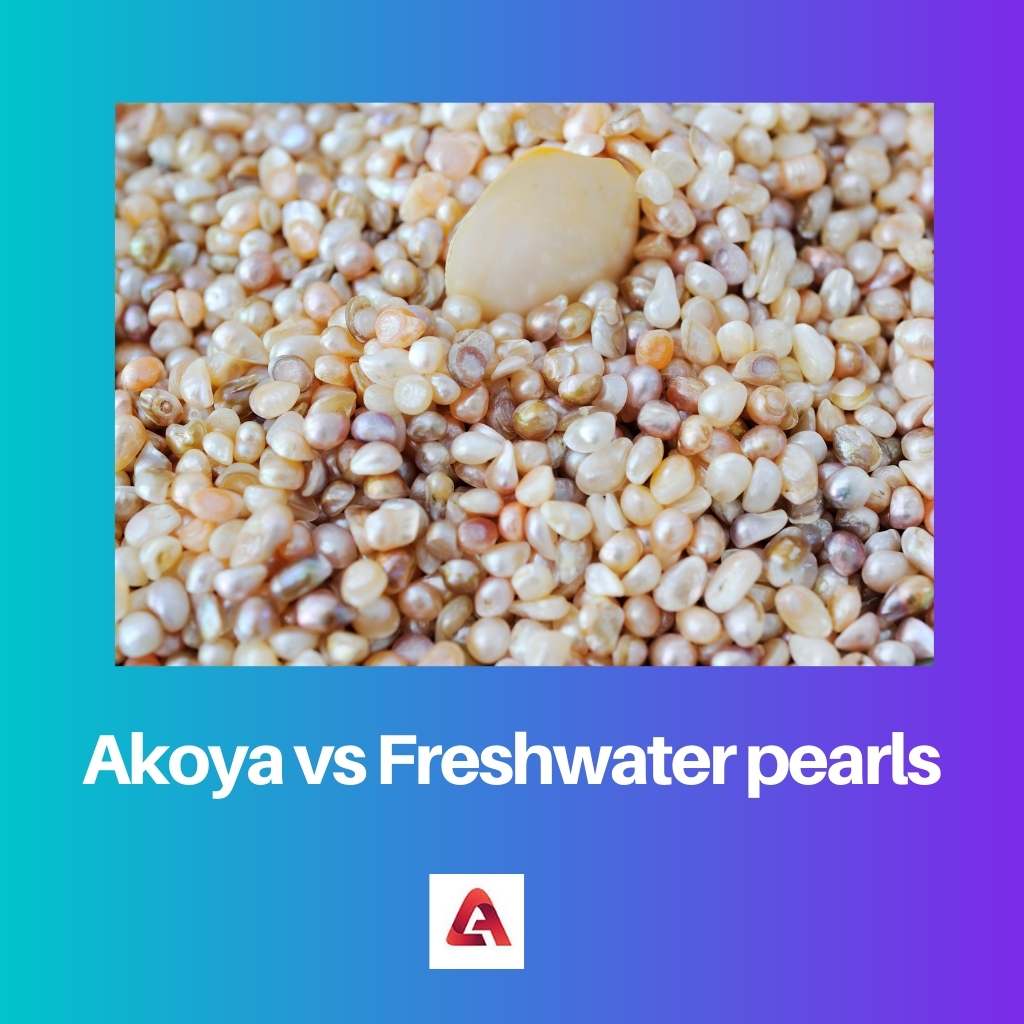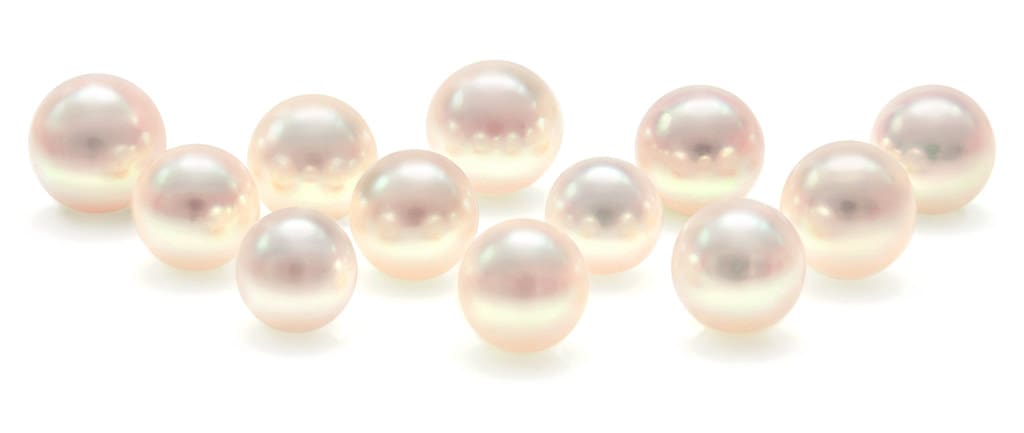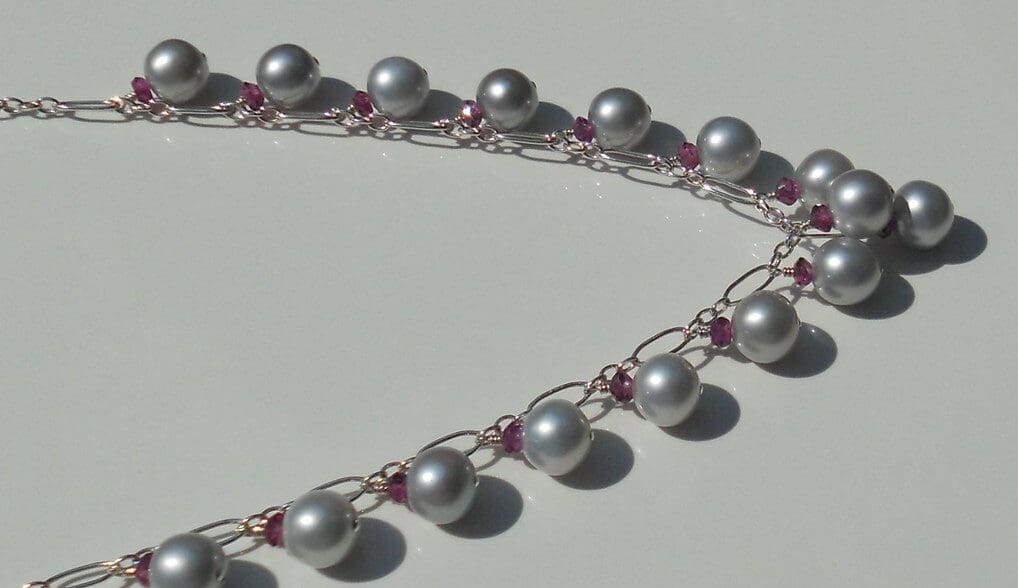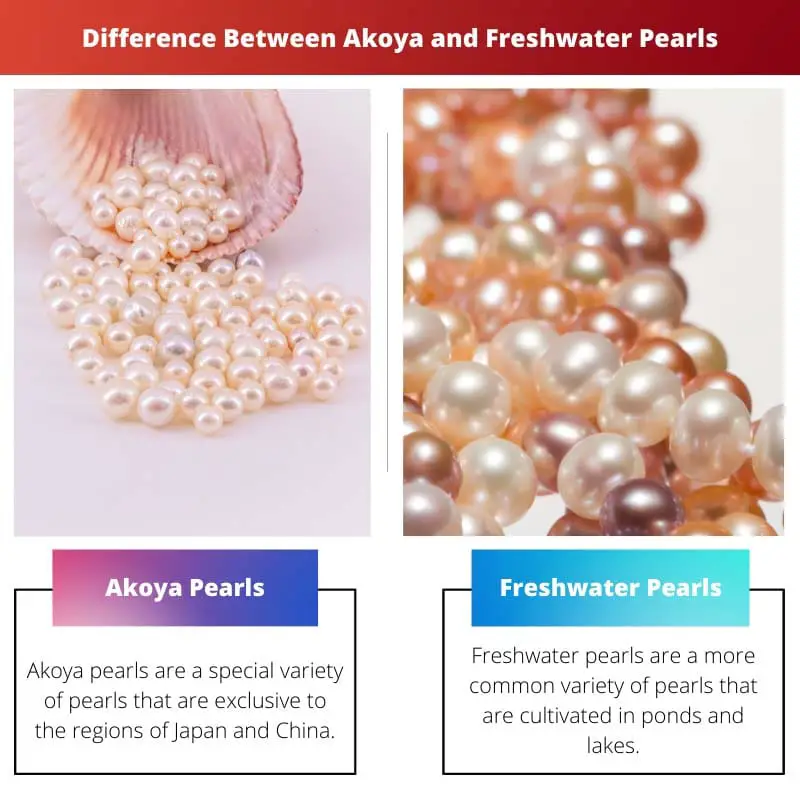Two majorly two types of pearls are the most sought-after, Akoya pearls and Freshwater pearls. The water and environmental conditions play a huge role in the formation of pearls inside a clam. Hence factors such as the shade and luster of the pearl depend upon the type of water the clam is in.
Key Takeaways
- Akoya pearls are saltwater pearls with a higher luster and more uniform shape, while freshwater pearls are less expensive, with a greater variety of shapes and colors.
- Akoya pearls are cultivated primarily in Japan, while freshwater pearls come mainly from China.
- Akoya pearls tend to be smaller than freshwater pearls, making them popular choices for classic jewellery pieces.
Akoya vs Freshwater pearls
The difference between Akoya and Freshwater pearls is that Akoya pearls are white, with slight undertones of pink and grey. Freshwater pearls, on the other hand, are found in a variety of shades, from white to pink to even lavender. Akoya pearls are also much rarer and hence more expensive than Freshwater pearls.

Akoya Pearls are a rare variety of pearls that are exclusive to the regions of Japan and China. These pearls are only formed in shades of white, with slight undertones of pink or grey. Perfectly round Akoya pearls are incredibly rare to find, and hence these pearls are very expensive.
Freshwater pearls are mainly cultivated in ponds and lakes and farmed in many places worldwide. These pearls can be cultivated in a variety of shades, from white to pink to even lavender, and completely round pearls are found more commonly. Hence these pearls are not as rare and can be found at many affordable rates.
Comparison Table
| Parameters of Comparison | Akoya Pearls | Freshwater Pearls |
|---|---|---|
| Definition | Akoya pearls are a special variety of pearls that are exclusive to the regions of Japan and China | Freshwater pearls are a more common variety of pearls that are cultivated in ponds and lakes |
| Luster | Akoya pearls are known for their brilliant luster | Freshwater pearls are not as lustrous as Akoya pearls |
| Color | Akoya pearls are only found in white, with slight undertones of pink and grey | Freshwater pearls can be cultivated in different colors, such as shades of white, pink, and lavender |
| Rarity | Akoya pearls are very rare and hence very expensive | Freshwater pearls are common pearls and thus are not as expensive |
| Treatment | Akoya pearls are not artificially treated | Freshwater pearls are sometimes enhanced with bleach and other chemicals |
What is Akoya Pearls?
Akoya pearls are some of the most sought-after pearls in the world. It is a type of cultivated pearl and is native to Japan and China. They are also some of the rarest pearls in the world and, thus, are very expensive.
Part of the reason for the exclusivity of this type of pearl is the brilliant luster and shine that these pearls give off. These are the most lustrous naturally occurring pearls are thus come at a very high price.
Another reason is the general rarity of the pearls. These pearls do not occur as commonly as freshwater pearls, and perfectly round specimens with no imperfections occur very rarely.
Due to this, jewelry made from this type of pearl fetches high prices. Unlike other cultivated pearls, Akoya pearls do not come in a variety of colors.
These pearls mostly occur in shades of white, with slight undertones of pink and grey. The luster of these pearls is also brilliant, with a brilliant white shine.
These pearls are also not artificially treated to enhance color and shine. Unlike in the case of other freshwater pearls, where the pearls are treated with bleach and other chemicals, there is no bleach treatment in the case of Akoya pearls.

What is Freshwater Pearls?
Freshwater pearls are cultivated pearls that are farmed in freshwater bodies such as lakes and ponds. These can be cultivated almost anywhere. Freshwater pearls are formed by inserting a small piece of mantle tissue directly inside the clam.
Over time the mantle tissue gets surrounded by nacre inside the clam, which leads to a pearl’s formation. Freshwater pearls have thicker nacre than the other types of pearls.
Freshwater pearls also occur in a variety of colors. These pearls range from shades of white to pink and even lavender. This is exclusive to these pearls, as other pearls, such as Akoya pearls, are not formed in different colors.
These pearls are also not as lustrous as Akoya pearls, and thus they are also not as expensive. As these pearls are farmed, they are also more common than other sea pearls.
Some prominent shades of Freshwater pearls used for making jewelry are peach and lilac pearls. Freshwater pearls are artificially treated with bleach and other chemicals to enhance the shine and color of the pearls.
Due to this, Freshwater pearls are not as expensive as Akoya pearls and can be found at many affordable prices.

Main Difference Between Akoya and Freshwater Pearls
- Akoya Pearls are a special variety of pearls that are cultivated in Japan and China. Freshwater pearls are common pearls that are farmed in ponds and lakes.
- Akoya pearls are known for their brilliant luster. Freshwater pearls are not as lustrous as Akoya pearls.
- Akoya pearls are mostly found in white, with slight undertones of pink and grey. Freshwater pearls are found in different colors, such as pink, lavender, yellow, etc.
- Akoya pearls are very rare and hence very expensive. Freshwater pearls occur very commonly.
- Akoya pearls are not artificially treated wt chemicals. Freshwater pearls are artificially treated with bleach and other chemicals to enhance their color and luster.

- https://www.sciencedirect.com/science/article/pii/S0044848606007368
- https://library.oapen.org/bitstream/handle/20.500.12657/22923/1007238.pdf?sequence=1#page=94

The article offers a thorough examination of the characteristics of Akoya and Freshwater pearls.
The article provides valuable information on the formation and characteristics of Akoya and Freshwater pearls.
The explanation of the difference between Akoya and Freshwater pearls is very clear and precise.
The information about the luster and rarity of Akoya pearls is very informative.
I agree. I found the comparison table very useful.
I appreciate the detailed description of the two types of pearls, their colors and rarity.
The explanation of the difference between Akoya and Freshwater pearls is excellent.
The information provided about the differences in color between Akoya and Freshwater pearls is highly educational.
The sections explaining the treatment differences between the two types of pearls were very enlightening.